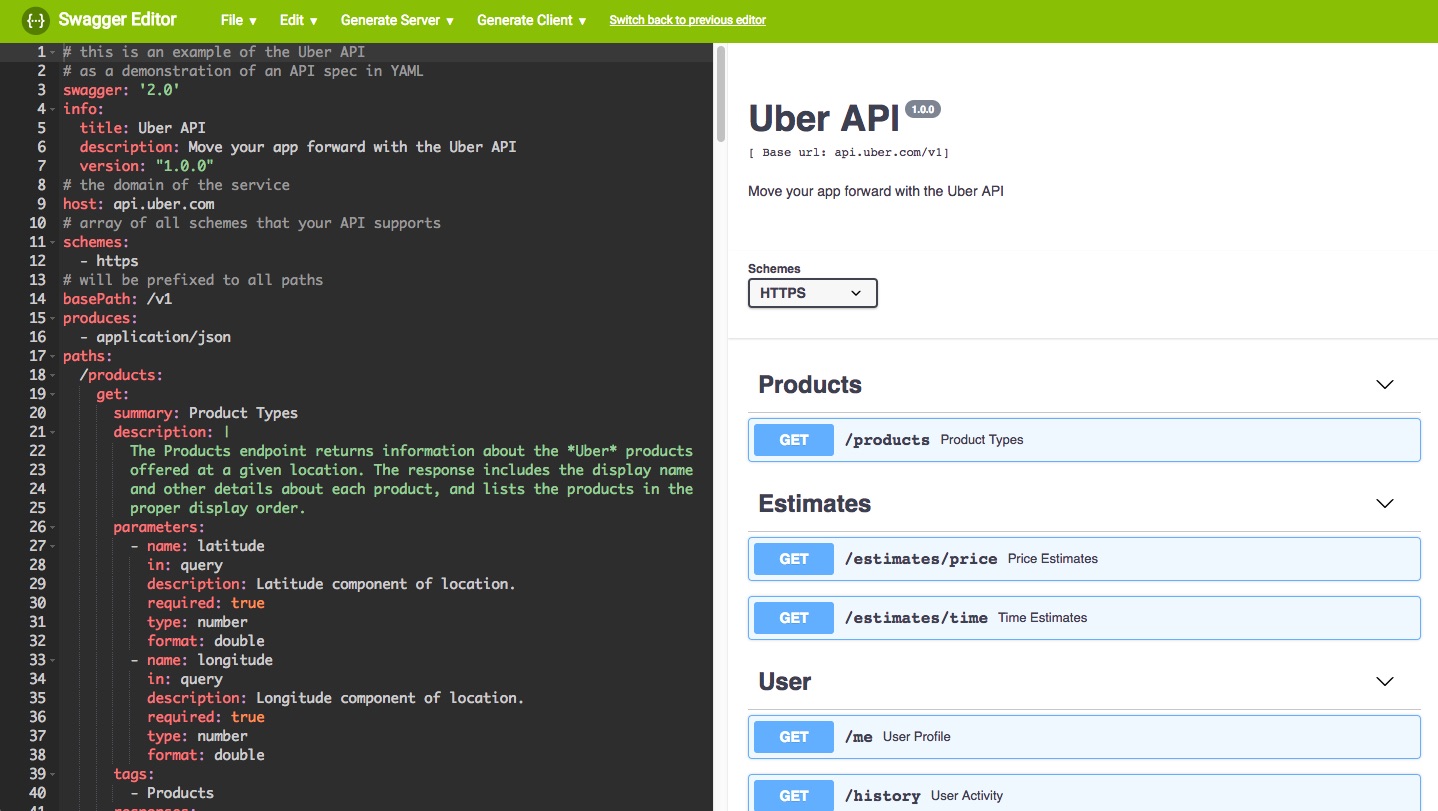

OpenAPI extension makes it easier and faster to navigate your OpenAPI definitions, especially when they get longer. The plugin automatically detects that this is an OpenAPI file, and the OpenAPI button is shown in the left-hand panel.

SWAGGER EDITOR 2 TO 3 CODE
OpenAPI extension for Visual Studio Code.The extension also integrates with API Contract Security Audit by 42Crunch, so that you can check the quality of your API definition directly in VS Code.īoth OAS v2 and v3 are supported. The features include, for example, SwaggerUI and ReDoc preview,IntelliSense, linting, schema enforcement, code navigation, definition links, snippets, static security analysis, and more!

The generated JSON file will appear in the generated subfolder.This Visual Studio Code (VS Code) extension adds rich support for the OpenAPI Specification (OAS) (formerly known as Swagger Specification) in JSON or YAML format. Click the Generate command in the toolbar to execute the generator. You can adjust settings here, or accept the defaults. RepreZen API Studio will create the GenTarget and display the. After selecting the appropriate GenTemplate, click Finish. For OpenAPI v3, you'll use the OpenAPI GenTemplate provided by OpenAPI-Generator. For OpenAPI v2, this will be the Swagger GenTemplate provided by Swagger-Codegen. In the New Generation Target dialog, set the GenTemplate to the JSON conversion template.With your OpenAPI specification open in the editor, click the New Generation Target button on the toolbar.To create and run the JSON converter GenTemplate: You can easily generate your YAML-formatted OpenAPI document to JSON format, using the " Swagger " generation template for OpenAPI v2, or the " OpenAPI " template for OpenAPI v3. This is why we do not recommend using the formatter on YAML OpenAPI files, and why the OpenAPI editor does not have a shortcut key for the format command. Formatting removes YAML comments, which are a unique feature of YAML, and not part of the JSON representation. Note: The formatter is available to normalize formatting in OpenAPI YAML files, but we do not recommend using it except for JSON conversion.
SWAGGER EDITOR 2 TO 3 HOW TO
This article shows you how to import an OpenAPI JSON file into API Studio, open it in the appropriate editor, and convert it to YAML format. Sometimes you need to use OpenAPI documents that are in JSON format. While KaiZen Editor has limited support for JSON format, it is optimized for YAML editing. KaiZen OpenAPI Editor, RepreZen's open source editor, allows you to edit OpenAPI documents inside RepreZen API Studio. YAML is the preferred syntax for OpenAPI v2 (Swagger) and v3 document formats, and is most widely supported by OpenAPI editors. But the usual YAML style, shown here, uses simplified delimiters and indentation to denote the structure. YAML can accept standard JSON syntax, with all of these extra characters. You can see that the YAML example doesn't need to use quotes, curly braces, and square brackets. "description" : "A link to the next page of responses"ĭescription: How many items to return at one time (max 100)ĭescription: A link to the next page of responses "description" : "An paged array of pets" , "description" : "How many items to return at one time (max 100)" , The following JSON and YAML snippets are equivalent: But YAML also includes its own, more concise and readable block syntax. YAML supports a flow syntax which is in most respects a superset of JSON, so valid JSON is also valid YAML. The OpenAPI Specification, supports two different syntax forms: JSON, and YAML. Reformatting a JSON OpenAPI Document to YAMLĮxporting a YAML-Formatted OpenAPI Document to JSON Format Opening a JSON OpenAPI Document in the Editor Importing a JSON OpenAPI Document into API Studio


 0 kommentar(er)
0 kommentar(er)
